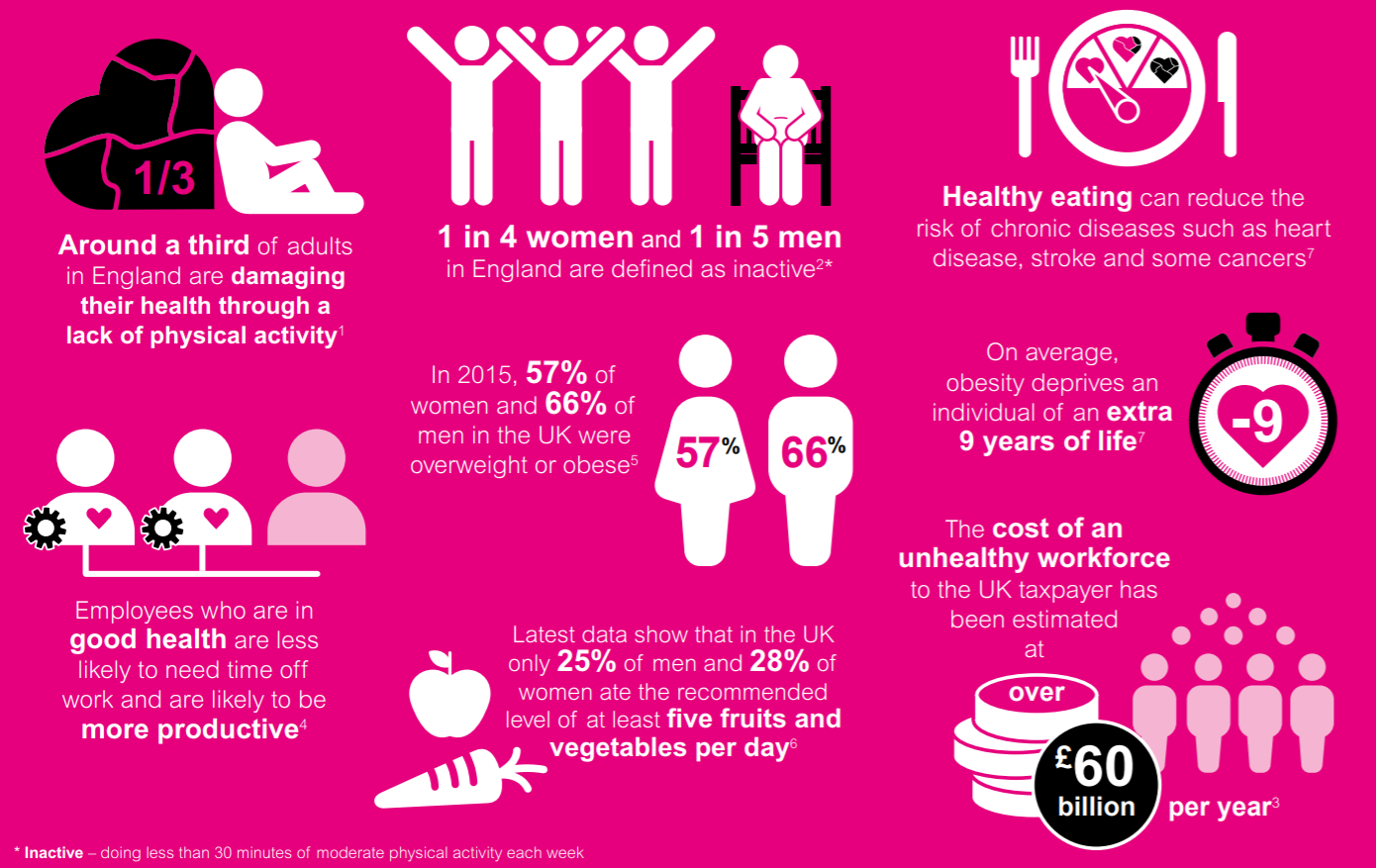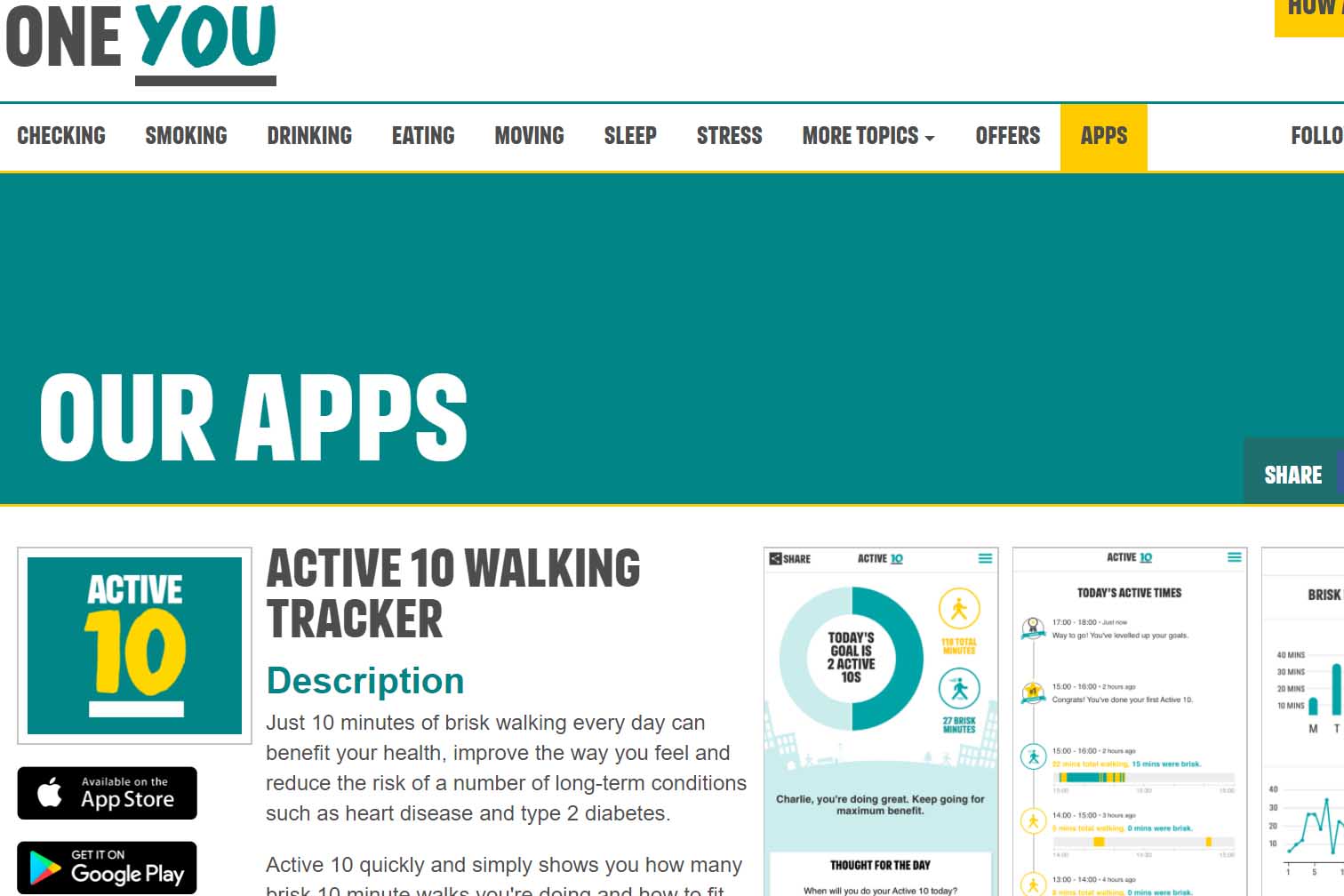Physical inactivity and poor diet are among the top causes of ill health, and if we get ill this can negatively impact on our working life.
Conversely when we’re feeling well we’re at our best. We’re more productive and take less time off sick, so it’s no surprise that employers increasingly see that it makes business sense to support the health of their staff.
Working adults spend a third of their waking hours in work which means our workplaces are key spaces for improving wellbeing.
These environments shape our behaviour; how active we are, what we eat, so businesses are well-placed to take simple steps to promote physical activity and healthy eating.
In this blog I want to summarise a few of the many practical tips for businesses that you’ll find in our new free resource ‘Physical activity, healthy eating and healthier weight – a toolkit for employers’, produced in collaboration with Business in the Community.
1. Promote physical activity amongst staff
It’s a sobering thought that around a third of adults are damaging their health through a lack of physical activity and this situation is bad for business and productivity. But employers can make a difference by making it easier for all of us to get active every day. Promoting walk-to-work or cycle schemes and providing lockers, changing and bike storage facilities as well as encouraging staff-led lunchtime walking or running clubs all make it easier for staff to be active every day.
2. Get sedentary employees moving more
Office workers often sit for hours in front of their computer – sometimes spending over seven hours per day sedentary – and this puts physical and mental health at risk. Simply encouraging employees to take short but regular breaks can help, as well as shaping the workplace through pooling bins and printers, which can be a great nudge to encourage people to get up and move around the workspace. Creating a moving culture can be beneficial to staff morale and cohesion too. Encouraging people to walk over and see a colleague rather than emailing them creates a much more personally connected workforce, as well as one that moves more.
3. Help employees eat well
When we’re busy, a fast-food lunch or reaching for the donut tray is often the easy choice and too often unhealthy food is the quickest to grab on the go. Employers have a key role to play in ensuring employees have access to healthier food and drink options. Our toolkit is packed with information on healthy eating including important questions employers can ask themselves; Do unhealthy options dominate the offering in your canteen or vending machines, could healthier options be subsidised and are there enough fridges so staff can bring fresh food or packed lunches? Do your staff go to local shops or cafes? If so, your employees are a major customer for these businesses, so could you influence them to provide a healthier choice?
4. Keep the conversation going
Make the most of opportunities to engage your workforce around the importance of eating well and moving more. Promote National Fitness Day, Workplace Challenge, National Bike Week or Healthy Eating Week for instance. You could also provide staff with trusted information to help them improve their health and wellbeing. Public Health England’s One You campaign provides a range of advice, tools and smartphone apps like ‘Active 10’, ‘Couch to 5K’ and ‘Easy Meals’.
5. Engage the whole workforce
Make sure you involve everyone who contributes to your business including people working part-time or working from home and even contractors. Try to ensure information and opportunities are available and suitable for everyone. Engaging shift workers is particularly important as shift work is associated with increased BMI, obesity and other health problems. Talk to your employees and understand their working patterns and the support that could be provided. This will help staff make healthier choices, creating solutions which are better embedded in their day to day working lives as they are co-produced and co-owned by and with staff.
If you run a business, work in HR or line-manage staff please take a look at the ‘Physical activity, healthy eating and healthier weight’ toolkit. The toolkit – co-produced with business - expands on these tips and includes case studies from businesses of different sizes and sectors who share their practical learning.
Whether you work in the private, public or voluntary sector you can take action to create a healthier and more productive workforce, helping your employees to be their best and ultimately making your business stronger.
Other toolkits include:







1 comment
Comment by Jim Lucas posted on
Hi Justin...thanks for this summary of ways we can reduce ill health at work. You make some sensible suggestions i.e. exercise and healthy food. As someone who has helped lots of people deal better with stress, the conversation part is key as well. This is easier, when those in higher positions make it safer for those at the coalface by speaking about their own struggles first...power makes a big difference to safety and I'd encourage employers to be brave, take care of your staff and build a strong alliance as a team.